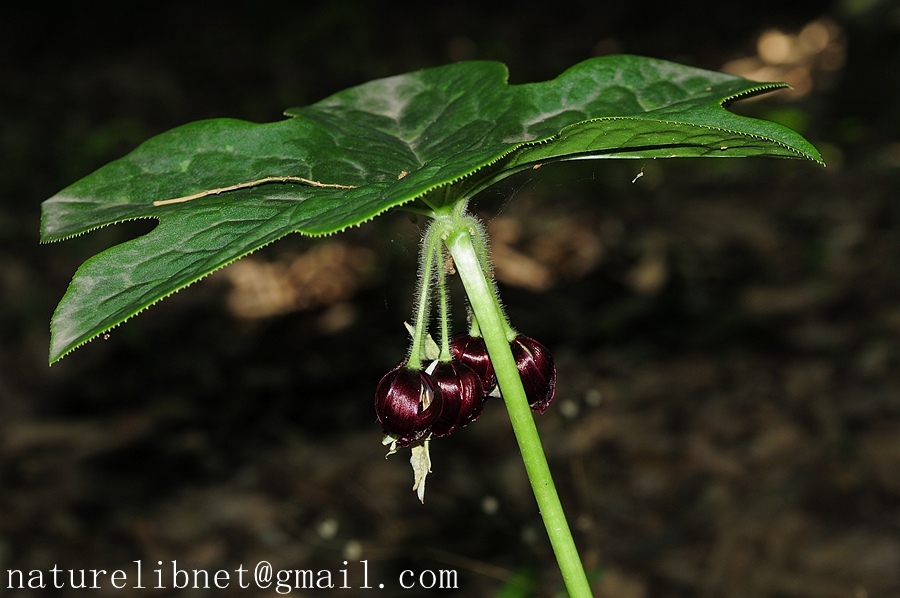- Scientific Name: Dysosma versipellis (Hance) M. Cheng ex T. S. Ying
- Ref: Acta Phytotax. Sin. 17(1): 18. 1979
- Synonyms: Podophyllum versipelle Hance, J. Bot. 21: 362. 1883; P. esquirolii H. Léveillé.
- Chinese Common Name: 八角莲 bājiǎolián
- Japanese Common Name: ハスノハグサ [蓮の葉草] hasunohagusa
- Family: Berberidaceae
- Genus: Dysosma
- Distribution: Forests, thickets, shaded and wet places by streams, bamboo forests; 300-2400 m. Anhui, Guangdong, Guangxi, Guizhou, Henan, Hubei, Hunan, Jiangxi, Shanxi, Yunnan, Zhejiang.
Plants 40-150 cm tall. Rhizomes stout, with numerous fibrous roots; aerial stems erect, pale green, unbranched, glabrous. Leaves alternate; petiole of lower leaves 12-25 cm, petiole of upper leaves 1-3 cm; leaf blade suborbicular, to 30 cm in diam., thinly papery, abaxially pubescent, venation obviously raised, adaxially glabrous, palmately 4-9-lobed; lobes broadly triangular, ovate, or ovate-oblong, 2.5-4 cm, base 5-7 cm wide, margin remotely serrate, apex acute, not lobed. Inflorescence 5-8-fascicled flowers. Pedicel pendulous, slender, pubescent. Flowers attached near base of blade, red. Sepals oblong-elliptic, 0.6-1.8 cm × 3-8 mm, outside puberulent, inside glabrous, apex acute. Petals spatulate-obovate, ca. 2.5 × 0.8 cm, glabrous. Stamens ca. 1.8 cm; filaments shorter than anthers; anther connective slightly prolonged, glabrous, acute. Ovary ellipsoid, glabrous; style short; stigma shield-shaped. Berry ellipsoid or ovoid, ca. 4 × 3.5 cm. Seeds numerous. Fl. Mar-Jun, fr. May-Sep. 2n = 12*. (Flora of China)
